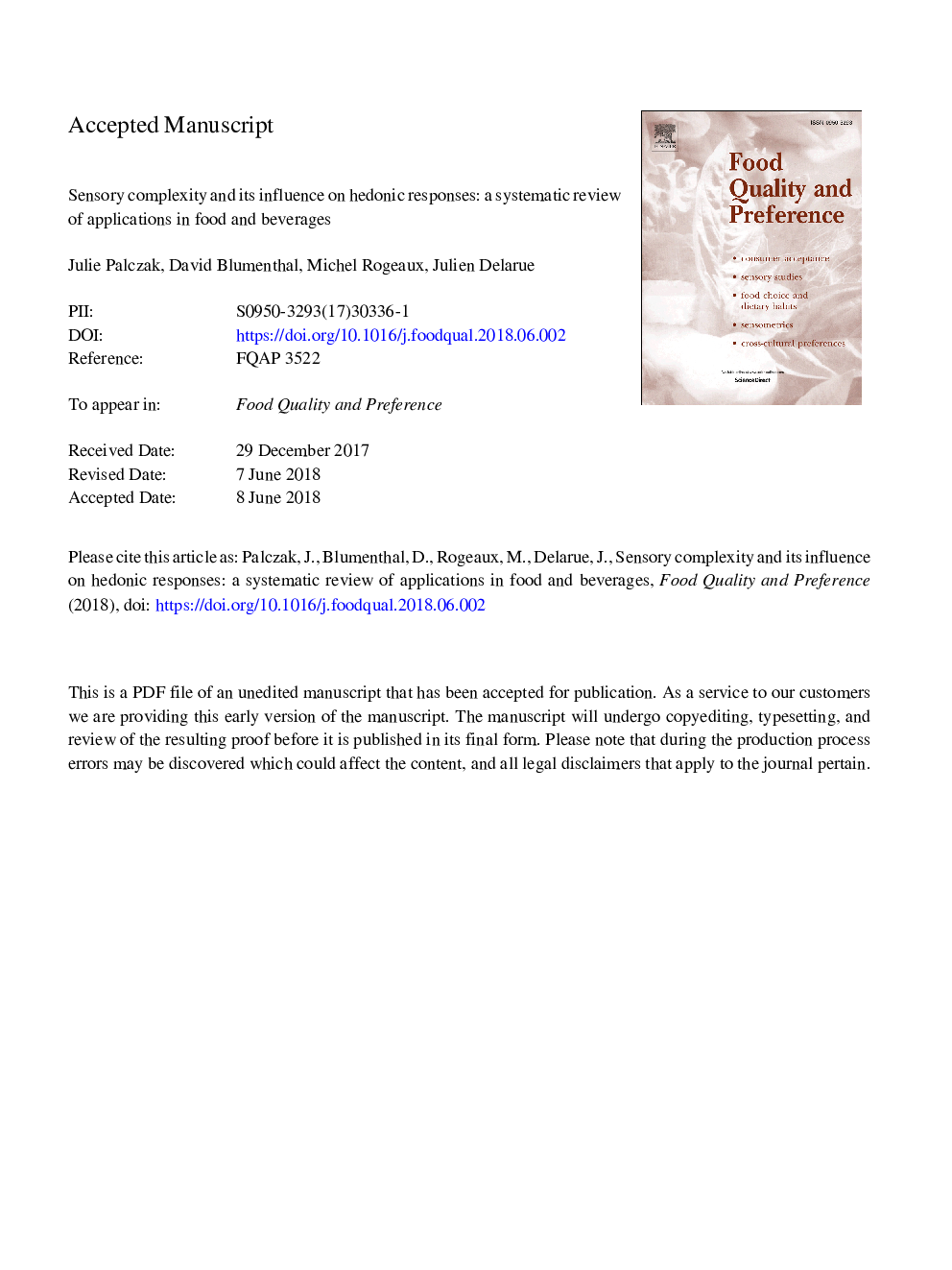| کد مقاله | کد نشریه | سال انتشار | مقاله انگلیسی | نسخه تمام متن |
|---|---|---|---|---|
| 8838352 | 1613129 | 2019 | 29 صفحه PDF | دانلود رایگان |
عنوان انگلیسی مقاله ISI
Sensory complexity and its influence on hedonic responses: A systematic review of applications in food and beverages
ترجمه فارسی عنوان
پیچیدگی حسی و تأثیر آن بر پاسخ های هودینی: بررسی سیستماتیک از برنامه های کاربردی در مواد غذایی و نوشیدنی ها
دانلود مقاله + سفارش ترجمه
دانلود مقاله ISI انگلیسی
رایگان برای ایرانیان
موضوعات مرتبط
علوم زیستی و بیوفناوری
علوم کشاورزی و بیولوژیک
دانش تغذیه
چکیده انگلیسی
This article reviews the scientific literature on complexity in the field of food and beverages. A literature search was carried out on online catalogues using the search terms 'complexity' and 'preference' or 'hedonic' or 'liking'. Fifty five relevant articles have been selected and analysed for the ways authors define, manage and measure complexity. Fourteen of these articles addressed the link between complexity and hedonic response. One major result is that there is no consensus regarding the definition of complexity. In addition to physical complexity of products, definitions of perceived complexity can be divided into three categories: sensory, cognitive and emotional. A direct consequence of the diversity of the definitions is that there are many different ways to measure complexity, including sensory or instrumental methods. In order to generate different levels of complexity, authors play with the number of food components (ingredients, chunks, flavour notes). Besides, complexity is always studied for one sensory modality only (e.g. either aspect or texture or smell or taste). Overall, very little attention is paid to the temporal dimension of sensory complexity. Eventually, only one paper out of 14 found an inverted U-curve relationship between complexity and hedonic response as suggested by Berlyne's theory.
ناشر
Database: Elsevier - ScienceDirect (ساینس دایرکت)
Journal: Food Quality and Preference - Volume 71, January 2019, Pages 66-75
Journal: Food Quality and Preference - Volume 71, January 2019, Pages 66-75
نویسندگان
Julie Palczak, David Blumenthal, Michel Rogeaux, Julien Delarue,
